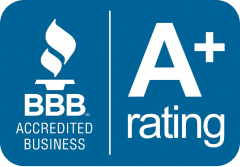Medicare Plan F offers the most benefits of all the supplemental Medicare plans available and can help reduce your out-of-pocket expenses. The goal of the policy is to address most of the coverage gaps in Medicare Parts A and B. For this reason, many people who are covered by the standard Medicare insurance policies are willing to pay the extra monthly premium to buy Plan F.
You can buy this plan directly from health insurance companies during the Medicare open enrollment period. Like other health insurance policies, premiums for Plan F are tax-deductible. However, new enrollees who become eligible after January 2020 will be unable to buy a Plan F policy.

What is Medicare Plan F?
Medicare Plan F is a Medigap supplemental health insurance offered to people with disabilities or older than 65 years old. Better known as Plan F, the policy is the most comprehensive of the 10 Medigap Insurance plans offered in each state. Plan F is a supplemental policy to standard Medicare Parts A and B plans and can fill many of the gaps in the standard Medicare policy and provide broader out-of-pocket cost support. However, not all health insurance gaps are covered by Plan F.
Find Medicare Plans in 3 Easy Steps
We can help find the right Medicare plans for you today
Read More: Life Insurance Options
What does Medicare Plan F cover?
Those with Medicare Insurance Plan F do not pay out-of-pocket costs for Medicare Insurance Part A and B. policyholders would only pay the premiums starting at $0 for Part A and 135.50 USD for Part B. In addition, people would not have to pay the deductible, which is $1,364 for Part A and $185 for Part B.
Supplemental Medicare Insurance Plan F will cover:
- Medicare Part A coinsurance and hospital costs
- Medicare Part A deductible
- Medicare Part B coinsurance and copays
- Medicare Part B deductible
- Medicare Part B excess charges
- Blood (first three pints)
- Part A hospice care coinsurance and copay (including room and board)
- Skilled nursing facility coinsurance
However, there are some medical expenses that Insurance Plan F will not cover, such as:
- Acupuncture
- Routine vision care
- Routine dental care
- Hearing aids and routine hearing tests
- Cosmetic surgery
- Prescription drugs
The most important gaps in coverage are prescription drugs, and we recommend buying Medicare Part D if you need this coverage. Medicare Plan F provides coverage for injectable or infusion drugs that are given in a clinical setting but don’t pay for other prescription drugs. The ideal coverage package would include Medicare Parts A and B, as well as the Part D prescription drug plan and a supplemental Medigap insurance policy such as Plan F.
Unfortunately, none of the Medicare and Medigap policies cover dental care. If you are looking for dental coverage, you must buy a stand-alone dental insurance policy.
Read More: Life Insurance for Children
How much does Medicare Part F cost?
The government determines Medicare premiums, deductibles, and out-of-pocket costs annually. Since Medicare Part F is the most comprehensive Medigap insurance policy, the premium can be costly. This usually ranges from $120 to $140 per month for a 65-year-old. However, the exact costs are determined by your location, plan provider, current health status, age, and gender. For this reason, it is important to compare the prices of the same Medicare insurance policies across different health insurance companies.
What is a high-deductible Medicare Plan F?
The benefits of the Medicare Plan F High Deductible Policy are the same as the standard Part F policy, although you would have to meet the deductible before you can access its health benefits. For 2019, the deductible for the high-deductible F plan is set at $2,300. If you want to switch from a highly deductible plan to a standard F plan, you may need to undergo a medical exam for underwriting.
A highly deductible Medicare Plan F policy could be helpful if you’re healthier and don’t think you need a lot of medical services. However, you should carefully review your own medical situation before committing to the high deductible plan, as you would be responsible for the full $2,300 if you incur high medical costs.
Suppose you’d have to do a colonoscopy that can cost up to $3,500.Under a standard Medicare Parts A and B plan with Medigap Plan F, the first 80% of this bill ($2,800) would be paid by Medigap Part B. The remaining 20% ($700) would be covered by plan F. In the end, you would not pay any medical expenses in this scenario, but pay the monthly premium of $140, which adds up to $1,680 yearly.
If I had the F Plan high deductible insurance policy, the first 80% would still be covered by Medicare Part B, but pay the next 20% of $3,500 out of pocket unless you had already reached the $2,300 deductible that year. However, premiums for a highly deductible plan may be well below the standard Medicare F plan. If you paid a rate of $40 per month for high-deductible insurance policies, that would come out to $480 a year – much less than the $1,680 you would have paid for the standard plan.
In this scenario, you would save $500 if you have a high deductible policy. However, this assumes that you only have a medical expense during the year. This would not be the case for most older adults. You should carefully evaluate your expected medical expenses for the year before choosing the highly deductible version of Medigap Plan F.
Are Medicare Plan F premiums tax-deductible?
When filing your federal tax return, Medicare Insurance Plan F premiums would be tax-deductible. In addition, any medical costs you pay out of pocket can also be deducted from your taxes. You would need to itemize these medical expenses, but tax deductions could provide valuable additional refunds. During the itemizing process, you can only deduct expenses that exceed 10% of your adjusted gross income.
Read: What Medigap
When and where to buy Medicare Plan F
You can buy Medicare F policies directly from private health insurance companies. Although insurers do not have to offer it, many do so because of its popularity.
Medigap insurance policies can be purchased during the Medigap enrollment period, which lasts six months and starts on the first day of the month when you turn 65. During this time, you can apply for any Medicare Advantage (C and D) or Medigap plan (F, G, K, L, M, or N), and the insurance policy would be guaranteed.
This means you won’t be denied coverage due to health problems and health insurance companies would have to sell you a policy at the best available price. For this reason, it is best to know what policy you want before the open enrollment starts.
If you decide to want plan F later on or do not meet the open enrollment deadline, you will need to go through a medical subscription. During this process, you must perform a medical examination that may make the policy more expensive or cause you to be denied coverage.
Is Medicare Plan F going away?
Starting January 2020, new enrollees will not be able to buy the Medigap insurance Plan. However, if you were eligible for Original Medicare before 2020, you can still enroll and maintain your current Plan F policy. In addition, Plan F remains one of the best Medicare Supplement Plans on the market. The change is due to Congressional legislation focused on giving doctors better pay when they provide services to Medicare patients.
Read More: Compare Medicare Supplement Insurance Plans
What is the difference between Medicare Plans F and G?
There are two main differences between the F and G plans: the premium and the amount of coverage you receive. Here is a comparison of the differences in coverage between the two Medigap plans:
Benefit | Plan F | Plan G |
Medicare Part A Coinsurance & Hospital Costs | yes | yes |
Medicare Part A Deductible | yes | yes |
Medicare Part B Coinsurance & Copays | yes | yes |
Medicare Part B Deductible | yes | |
Medicare Part B excess charges | yes | yes |
Blood (first three pints) | yes | yes |
Skilled nursing facility coinsurance | yes | yes |
As you can see, Medigap Plan G wouldn’t cover the Medicare Part B deductible. This means that if you bought Plan G, you would have to pay the Part B deductible, which is 185 USD by 2019 as you receive health services.
In addition, typical Medicare Plan F premiums are slightly higher compared to Plan G ($140 vs $110, respectively) and show a higher interest rate increase year after year. The increased premiums are due to the more comprehensive coverage you get through Plan F.
Find Medicare Plans in 3 Easy Steps
We can help find the right Medicare plans for you today
FAQs
What are the benefits of plan F?
Medicare Supplement Plan F includes the following fundamental Medicare benefits: Hospitalization: covers the Part A copay and provides coverage for an additional 365 days after Medicare benefits have expired. Part B coinsurance (usually 20% of Medicare-approved charges) or copayments for hospital outpatient services are paid by Medical Expenses.
Who is eligible for plan F?
Only Plan F is available if you become Medicare eligible before January 1, 2020. (which means your 65th birthday occurred before January 1, 2020). Or you were eligible for Medicare before January 1, 2020, due to a disability.
Does Medicare Part F cover prescriptions?
Prescription medicines are not covered by Medicare Supplement Plan F. Prescription drug expenditures are not covered by Medicare Supplement plans by law. Prescription drug coverage is often available to Medicare enrollees in one of two ways: Enroll in a Medicare Advantage plan that provides prescription drug coverage (Medicare Part C).
Why was Medigap plan F discontinued?
Plan F (and Plan C) are being phased out as a result of new legislation that prohibits Medicare Supplement insurance plans from covering Part B deductibles. Private insurance firms can no longer provide Plan F and Plan C to new Medicare subscribers since they pay the deductible.
Does Plan F have a deductible?
During the Medicare open enrollment period, you can purchase this plan directly from health insurance carriers. Plan F premiums, like those for other health insurance policies, are tax-deductible. 24th of January, 2022
Should I switch from Plan F to Plan G?
Plan G is usually much less expensive than Plan F. Moving from F to G will often save you $50 each month. Even though you’ll have to pay a one-time $233 deductible for Medigap G’s Part B deductible, the monthly savings will be worth it in the long term.
Has Medicare Plan F been discontinued?
Is Plan F of Medicare being phased out? No, Medicare Plan F is not being phased out, but it is no longer available to new Medicare beneficiaries. The Medicare Access and CHIP Reauthorization Act (MACRA) of 2015 made it illegal for Medicare Supplement plans (particularly F and C) to cover Part B deductibles.
Does Medicare Plan F cover deductible?
The most comprehensive Medicare Supplement plan is Medigap Plan F. It is also known as Medicare Supplement Plan F, and it covers both Medicare deductibles as well as all copays and coinsurance, leaving you with no out-of-pocket expenses. This article has been updated for the year 2022.
Can I keep my plan F after 2020?
You will be able to keep your Medicare Supplement Plan F if you started Medicare Part A before January 1, 2020. You don’t have to renew or re-enroll every year to keep your Plan F. Your coverage will continue as long as you pay your premiums on time.
How does Plan F work?
In essence, with Plan F, you won’t have any out-of-pocket expenses for anything covered by Original Medicare (Medicare Part A and Medicare Part B). This means you won’t be responsible for any deductibles, copays, coinsurance, or other fees once Medicare has approved your claim.








